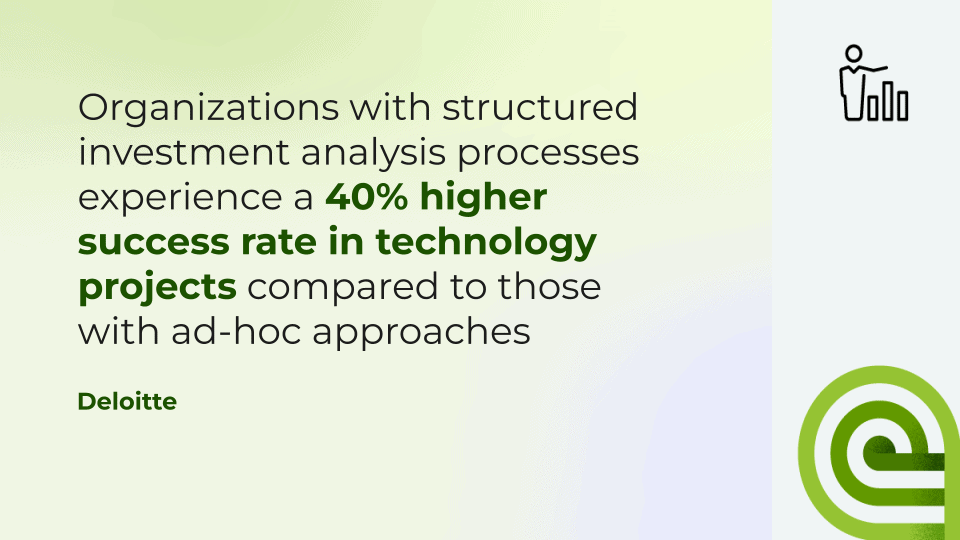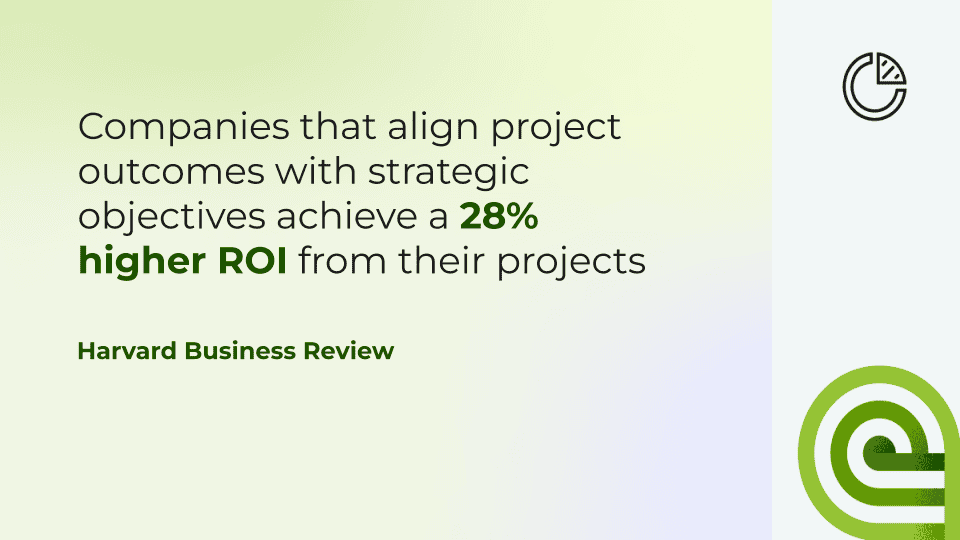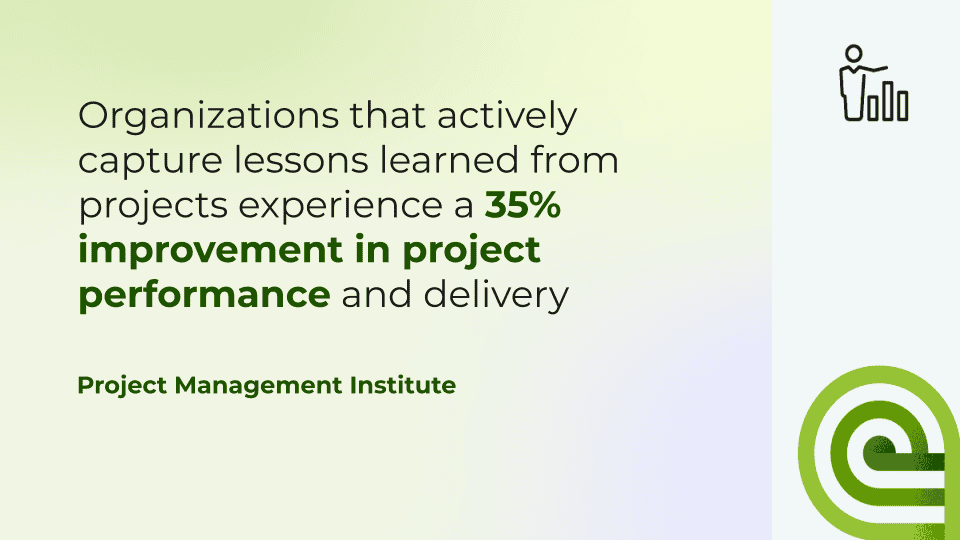In this guide, we will cover the transformative power of uniting multiple vendors within a cohesive testing ecosystem. This goes beyond mere efficiency; it’s about reimagining what’s achievable in software development. Embracing a multi-vendor testing ecosystem isn’t just a choice; it’s an ethos. It champions quality, ignites innovation, and empowers your team to reach new heights.
Now, let’s delve into the world of ROI-driven tech investments and how they harmonize with your strategic objectives and the market dynamics.
Step 1 – Objective and key results (OKR) setting
Step 2 – Key performance indicator (KPI) identification
Step 3 – Investment analysis and selection
Step 4 – Implementation and monitoring
Step 5 – ROI evaluation and learning
Step 6 – Strategy adjustment and future planning
Let’s get started!
Step 1: Objective and key results (OKR) setting
Setting clear and strategic objectives is crucial for guiding an organization’s growth and ensuring alignment with its long-term vision. Objective and Key Results (OKR) are s a powerful methodology, enabling organizations to define goals and track progress effectively.
Here’s how to do it:
Utilizing a digital platform for collaborative OKR setting
Leveraging a digital platform for the collaborative setting of OKRs allows for a more structured and transparent goal-setting process. This platform enables the involvement of various stakeholders, ensuring that the objectives set are comprehensive and representative of the organization’s collective vision.
By using this method, stakeholders from different departments can contribute their insights, helping to shape a well-rounded and ambitious set of objectives.
Action steps for implementing OKR setting
Initiate collaboration
Start by organizing sessions where stakeholders from relevant departments can come together to discuss and propose strategic objectives. This collaborative approach not only enhances the relevance of the OKRs but also fosters a sense of ownership and commitment across teams.
Define clear objectives
Utilize the platform to define clear, concise objectives directly contributing to technological growth and innovation. These objectives should be ambitious yet achievable, pushing the organization forward while remaining grounded in reality.
Establish measurable key results
Set specific, measurable key results alongside each objective that provide a clear benchmark for success. These key results should be quantifiable and time-bound, offering a clear path to assess progress and effectiveness.
Regular updates and reviews
Schedule regular review sessions to assess progress against the OKRs. The platform should allow for easy tracking and updating of these metrics, enabling stakeholders to see real-time progress and make adjustments as needed.
Feedback and iteration
Encourage ongoing feedback from all stakeholders involved in the OKR process. Use this feedback to refine and iterate on objectives and key results, ensuring they remain aligned with the organization’s evolving technological and market overview.
Implementing OKRs for technology strategy provides numerous benefits. It ensures that all technological investments and innovations are strategically aligned with the broader organizational goals, enhancing coherence and efficiency.
OKRs also improve transparency and accountability, as they allow everyone in the organization to understand the direction of technological development and their role in achieving these objectives.
This systematic approach to goal setting and evaluation fosters a culture of continuous improvement and strategic focus, which is essential for staying competitive in market environments.
Step 2: Key performance indicator (KPI) identification
To effectively measure the success of technology investments, it is crucial to establish precise metrics that can objectively assess performance and impact. Key Performance Indicators (KPIs) serve as these essential metrics, providing insights into how well technology initiatives perform against the strategic objectives in the OKRs. Let’s follow these steps:
Utilize a digital platform for KPI identification
Using a digital platform to identify and agree upon specific KPIs facilitates a structured and collaborative approach. This platform enables stakeholders from various sectors of the organization to contribute, ensuring that the KPIs are comprehensive and reflective of the diverse impacts technology investments might have across the organization.
Action steps for implementing KPI identification
Collaborative selection of KPIs
Initiate discussions among stakeholders to identify which KPIs would most effectively measure the success of the current technology investments. This collaboration should aim to align the KPIs closely with the established OKRs, ensuring they are directly relevant to the strategic goals.
Setting relevant KPIs
Choose KPIs that are not only relevant but also timely and actionable. These could include metrics like system uptime, user adoption rates, performance efficiency, and return on investment (ROI). The chosen KPIs should provide clear evidence of progress or highlight areas needing improvement.
Integration and accessibility
Ensure that these KPIs are integrated into the digital platform where they can be continuously monitored. This integration allows for real-time tracking and access, making it easier for all stakeholders to stay informed about the progress.

Regular review and adjustment
Establish a routine for regularly reviewing these KPIs to assess the impact of technology investments. During these reviews, stakeholders can discuss whether the KPIs still align with the organization’s goals or if adjustments are necessary due to shifts in strategic direction or market conditions.
Feedback mechanism
Implement a feedback mechanism within the platform that allows users to report issues or provide insights based on KPI performance. This feedback can be invaluable for refining technology strategies and improving overall investment outcomes.
Identifying and monitoring the right KPIs is crucial for quantifying the success of technology investments and ensuring that they deliver the intended benefits. Effective KPIs enable organizations to make data-driven decisions, optimize technology strategies, and demonstrate accountability to stakeholders.
Additionally, they foster a culture of continuous improvement by providing clear targets for success and areas for future enhancement.
This strategic approach to KPI identification and monitoring ensures that technology investments are not only justified but are also contributing positively to the organization’s long-term success.
Step 3: Investment analysis and selection
For your organization to thrive and stay competitive, it is crucial to carefully evaluate potential technology investments and ensure their alignment with established OKRs. This step involves a thorough analysis to determine how well each potential investment aligns with the organization’s strategic goals and operational requirements.
Using a digital platform for comprehensive investment analysis
A digital platform can significantly enhance the process of evaluating potential technology investments. By leveraging this tool, organizations can ensure a structured and systematic approach to analyzing each investment’s strategic fit, potential ROI, and its capability to meet or exceed the defined KPIs.
Action steps for effective investment analysis
Gather comprehensive data
Initiate the process by gathering all relevant data on potential technology investments. This includes technical specifications, cost details, support requirements, and any other pertinent information that could impact the investment decision.
Assessment for strategic fit
Use the platform to analyze how well each technology aligns with the organization’s OKRs. This analysis should consider whether the technology can support the achievement of key objectives and how it integrates with current systems and processes.
ROI estimation
Calculate the potential ROI of each technology investment. The platform should facilitate this calculation by allowing for the input of expected benefits and costs over time. This includes direct financial gains, efficiency improvements, and qualitative benefits such as enhanced customer satisfaction or employee productivity.
Compatibility with KPIs
Evaluate whether the technology can meet or exceed the established KPIs. This involves assessing the technology’s capacity to deliver on performance metrics that have been identified as critical to the success of organizational goals.

Stakeholder input and decision-making
Facilitate stakeholder discussions within the platform to gather insights and perspectives on each potential investment. This collaborative approach ensures that all views are considered before making a final decision.
Selection and prioritization
Based on the comprehensive analysis, select the technology investments that offer the best alignment with OKRs, the highest ROI, and the most substantial ability to meet or exceed KPIs. Prioritize these investments based on their strategic importance and resource availability.
This rigorous approach to analyzing and selecting technology investments ensures that resources are allocated to technologies that are most likely to drive strategic advantages and operational success.
By systematically assessing each potential investment for strategic fit and ROI, organizations can make informed decisions that not only align with their long-term goals but also provide measurable benefits.
This careful selection process helps mitigate risks associated with technology investments and maximizes the impact of financial resources used.
Step 4: Implementation and monitoring
Effectively managing the rollout of selected technology investments is critical to ensure they deliver the anticipated benefits and align with the organization’s strategic objectives.
Proper implementation and monitoring are vital to this process, helping to guarantee that the deployment of new technologies meets the planned timelines, budgets, and performance standards. Here’s how to do it:
Utilize platform tools for effective project management
A digital platform equipped with project management and monitoring tools plays a crucial role in this step. These tools enable organizations to oversee the entire implementation process systematically, ensuring each phase of the rollout adheres to the defined OKRs and KPIs.
Action steps for successful implementation and monitoring
Project management setup
Set up project management functionalities within the platform to create a structured framework for the technology rollout. This setup should include detailed project timelines, resource allocation, milestone definitions, and task assignments.
Real-time monitoring
Implement monitoring tools that provide real-time data on the progress of the technology implementation. This includes tracking progress against milestones, budget adherence, and any deviations from the initial project scope.
Alignment with OKRs and KPIs
Continuously assess the rollout’s alignment with the organizational OKRs and the specific KPIs set for the investment. This assessment should evaluate both the implementation process and the technology’s performance post-deployment.

Adjustment strategies
Utilize the platform to facilitate quick adjustments to strategies or corrective actions as necessary. This agility is crucial when dealing with unexpected challenges or deviations from planned outcomes, ensuring the project remains on track.
Stakeholder communication
Keep all stakeholders informed through regular updates and reports generated via the platform. Effective communication helps maintain transparency and allows for collaborative problem-solving when issues arise.
Feedback integration
Encourage feedback from users and stakeholders during and after the implementation process. Use this feedback to refine the technology and its deployment strategy, enhancing future rollouts and technology effectiveness.
Implementing and monitoring technology investments through a dedicated platform ensures that projects are completed efficiently and effectively. This approach not only helps maintain alignment with strategic objectives but also provides the flexibility to make informed adjustments based on real-time project insights.
As a result, organizations can minimize risks associated with technology rollouts and maximize the returns on their investment, thereby supporting sustained organizational growth and innovation.
Step 5: ROI evaluation and learning
After the implementation of new technology investments, it is essential to evaluate their success and the ROI. This step is crucial not only for justifying the financial expenditures involved but also for understanding the impact of these investments on organizational goals and strategies. Let’s break down the steps:
Deploying analytics and reporting tools
To facilitate a thorough evaluation, organizations should deploy advanced analytics and reporting tools within their digital platforms. These tools will enable detailed analysis of how well the technology investments have met predefined OKRs, satisfied KPIs, and generated the anticipated ROI.
Action steps for effective ROI evaluation
Integration of analytics tools
Integrate comprehensive analytics tools into the platform to track and analyze the performance of new technology against expected outcomes. Ensure these tools can measure various metrics related to efficiency gains, cost savings, revenue enhancement, and user satisfaction.
ROI calculation
Use the platform to calculate ROI by comparing the benefits obtained from the technology (e.g., increased productivity, and reduced operational costs) against the investment made. This calculation should factor in both direct financial gains and indirect benefits such as improved employee engagement or customer satisfaction.
Performance reporting
Regularly generate reports detailing the outcomes of the technology implementation. These reports should provide insights into how well the technology has achieved the set OKRs and KPIs, offering a clear picture of its effectiveness and impact.

Lessons learned gathering
Create mechanisms within the platform to document lessons learned throughout the technology investment process. Encourage stakeholders to contribute their experiences, noting both successes and areas for improvement.
Continuous improvement initiatives
Utilize the gathered data and lessons learned to inform continuous improvement initiatives. Analyze trends and patterns that could indicate potential enhancements or adjustments needed for future technology investments.
Future planning
Leverage insights from the ROI evaluation to plan future technology strategies. Use data-driven evidence to support decisions regarding scaling up successful technologies or discontinuing those that do not meet expectations.
By systematically evaluating ROI and gathering comprehensive insights, organizations can significantly enhance their decision-making processes regarding technology investments. This approach not only ensures accountability but also drives efficiency by identifying the most effective technologies that contribute to strategic goals.
Additionally, by learning from each investment, organizations can continually refine their technology strategies to better align with evolving market conditions and internal objectives, thus fostering a culture of innovation and continuous improvement.
Step 6: Strategy adjustment and future planning
After assessing the return on investment and gathering critical insights from technology deployments, it’s vital to refine and adjust the organization’s technology strategy to optimize future outcomes.
This process of continuous evaluation and strategic recalibration ensures that the organization remains agile and aligned with evolving business environments and technological advancements. Here’s how to do it:
Utilizing insights for strategic decision-making
To effectively refine the technology strategy, organizations should utilize the insights gained from the investment evaluations. These insights provide a valuable feedback loop that informs future strategic decisions, helping to identify what works, what doesn’t, and what can drive better results in subsequent initiatives.
Action steps for strategy adjustment and future planning
Revising OKRs and KPIs
Based on the outcomes and insights from the technology investment evaluations, revise the existing OKRs and KPIs to reflect the learned realities and strategic priorities better. This may involve setting new goals that are more aligned with proven areas of success or adjusting performance indicators to focus on more impactful metrics.
Informing future investments
Use the analyzed data to guide future technology investments. Identify areas where technology has generated significant value and consider additional investments in these areas. Conversely, recognize areas where investments have not met expectations and reassess the viability of continuing in those directions.
Strategic planning sessions
Organize strategic planning sessions that incorporate insights from past technology implementations. These sessions should involve key stakeholders and decision-makers and use data-driven evidence from the evaluations to shape the technology strategy.
Integration of adaptive learning
Ensure that the strategy adjustment process is flexible and includes mechanisms for adaptive learning. This approach allows the organization to continuously refine its strategy based on ongoing results and changing external conditions.
Communicating changes and expectations
Communicate any changes in strategy or objectives to all relevant stakeholders. Ensuring everyone understands the adjusted goals and the reasons behind changes is crucial for maintaining alignment and engagement across the organization.
Preparing for scalability and innovation
Plan for the scalability of successful technologies and explore innovative approaches for integrating new technologies that could potentially enhance organizational performance and competitiveness.
The proactive adjustment of technology strategy and future planning based on solid analytical insights ensures that organizations can maintain a competitive edge and adapt to market changes efficiently.
This strategic agility not only enhances operational effectiveness but also fosters a culture of innovation and continuous improvement.
By consistently aligning technology investments with strategic goals and adapting based on outcomes, organizations can better manage resources, capitalize on new opportunities, and drive sustained growth and success.
Final Word
This journey from objective setting and KPI identification to strategic adjustments and future planning demonstrates a commitment to not only align with but also shape, market dynamics and internal objectives.
Now is the moment to act on the insights and strategies discussed. Harness the power of a multi-vendor ecosystem to drive significant improvements in software testing and broader technological initiatives. Each step you take is an investment in the future, positioning your organization to capitalize on opportunities and overcome challenges in a competitive landscape.
Initiate the detailed steps outlined, engage deeply with your team and technology partners, and commit to a cycle of continuous evaluation and improvement. By doing so, you empower your organization to achieve unprecedented levels of efficiency, innovation, and market responsiveness.
Ready to discover how DevSkiller can elevate your approach to talent assessment and development? Watch our video demo today and see firsthand the transformative power of our multi-vendor testing ecosystem.




